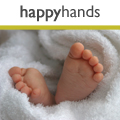Baby Clinic
Bottle Feeding
Sterilising and bottle hygiene
Until your baby is one year old, any feeding items needs to be sterilised, especially milk bottles and any breast pump equipment you might be using.
Cleaning bottles
All equipment should be thoroughly washed after use and before being sterilised. It is advisable to do this by hand rather than in a dishwasher, unless you can thoroughly rinse machine washed items afterwards. A dishwasher is more likely to make teats perish more quickly, too.
Sterilising methods
- Electric steriliser. This is the most convenient way to sterilise several bottles and even pump equipment in one go. They work by heating up a small amount of water and steaming the items at high temperatures. The bottles will remain sterile for a few hours if left inside the steriliser, but follow the guidance on your particular product for safe use.
- Cold water steriliser. Useful if you need to sterilise bottles when you are travelling or not near an electricity supply, this is a bucket of water into which you dissolve a sterilising tablet and then you add your bottles. They will be kept sterile inside for up to 24 hours, and will not need to be rinsed before use.
- Microwaveable steam bags. Useful when you’re on the go, these bags enable you to place the parts of your bottle inside before microwaving the bag for three minutes.
Bottle safety
Over the months bottles and teats will begin to scratch or break up. Make sure you replace any damaged parts with new sets when this happens.
Increasing numbers of feeding bottles are now made ‘Bisphenol-A free’. Bisphenol-A is a common ingredient in many kinds of plastic bottles but there is a concern that exposure to high amounts of this chemical – possibly leached into the liquids stored in the bottle – can be harmful to babies. As a precaution, many parents choose BPA-free bottles.
Storing milk
Once a bottle has milk in it – expressed breastmilk or formula – it should be kept sealed until it is being used. If your baby takes a long time to feed, do not reheat it but make a fresh bottle after an hour or so. Do not put a half-drunk bottle in the fridge for later.
See also Preparing feeding bottles in advance.
Related Articles
A Great Day Out at The Baby Show, Excel
Preparing Premature Infants for School
BornFree – the natural approach to bottles
Bottle-feeding: keeping it natural
Buyer's guide to feeding bottles
Buyer's guide to feeding teats
BabyBjörn venture into drinking cups
Related Products
Tommee Tippee, Steam Steriliser
Related Forum Topics
Forums: Baby
Re: does any1 know anything that will help me get my baby into a better sleep routen?
clarejayne, Mother of 1, Nottinghamshire
Re: Cranial massage
Clare, Mother of 2, London
Re: fussy eater
Clare, Mother of 2, London
Re: Try this perfect family lunch in Hyde Park
Clare, Mother of 2, London
Have Your Say
Be the first person to comment on this article, just post a comment below.





In order to post a comment you need to be a member. Join Now | Sign in